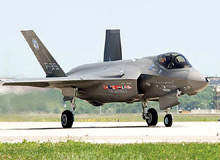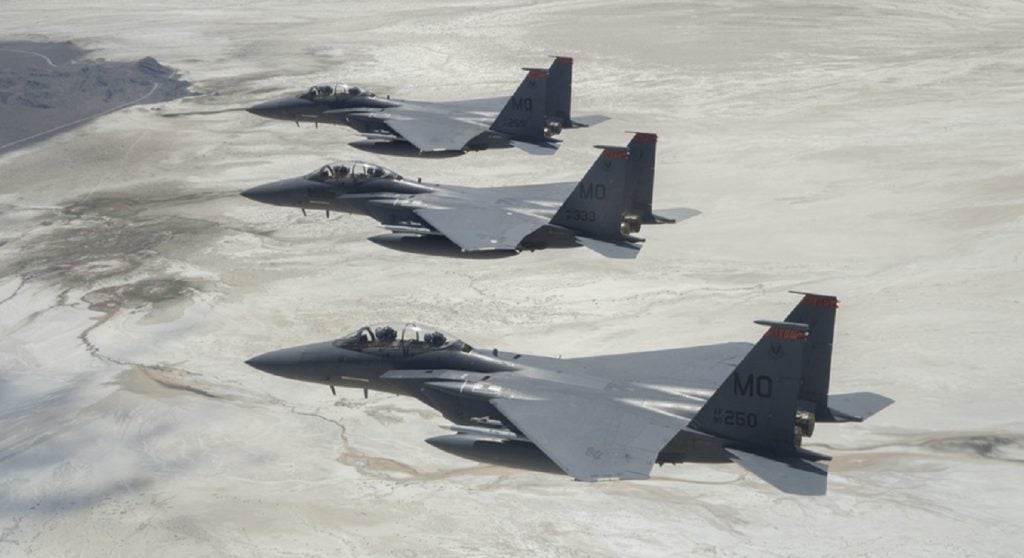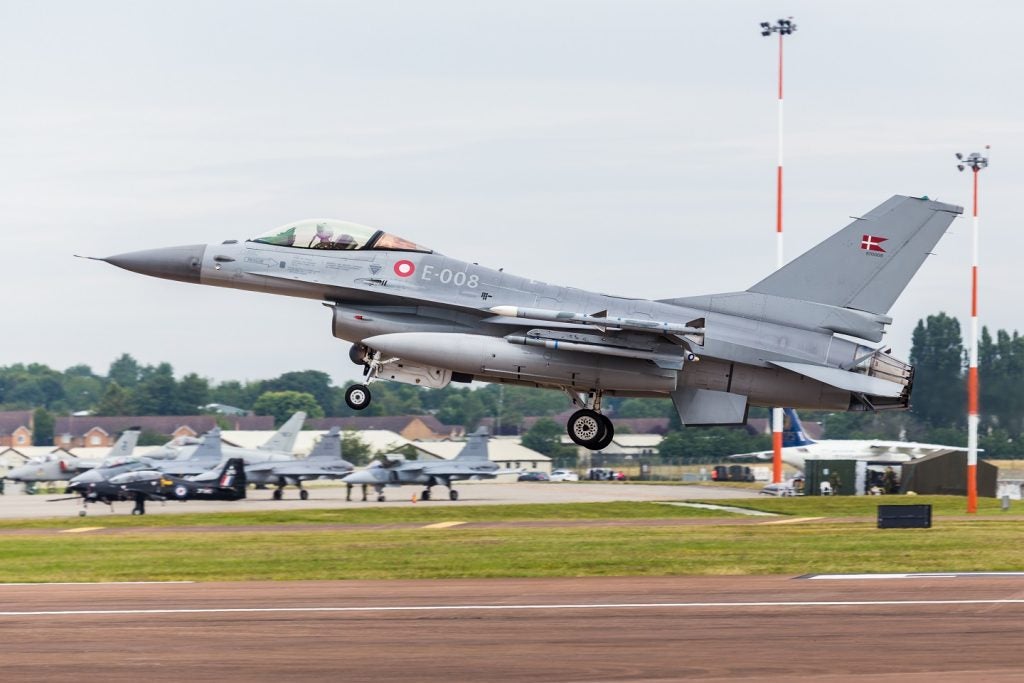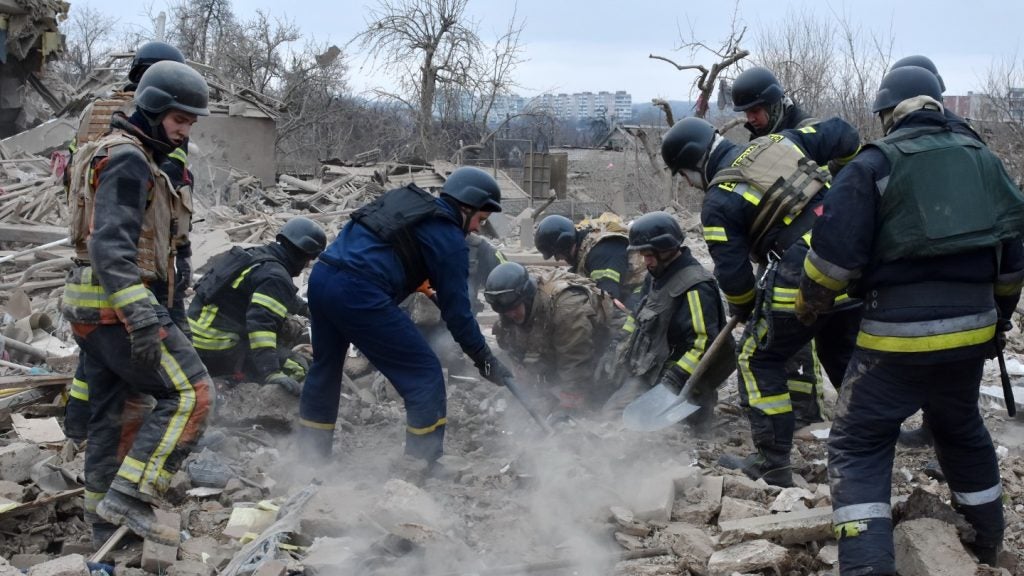
Designed specifically to replace a number of US air and naval fighters the F-35 supersonic, multi-role, fifth-generation stealth fighter has become one of the most talked about strike fighters yet. All F-35 variants will be first-day-of-the-war stealth fighters, capable of deep penetration of the most sophisticated air defences.
It will replace the US Air Force A-10s and F-16s, US Navy F/A-18s, US Marine Corps AV-8B Harriers and F/A-18s, and UK Harrier GR7s and Sea Harriers. It will also become part of the combat effort of nations around the world, eager to benefit from advancements for the pilot and power sources that promise better capability in the air.
F-35 development
Lockheed Martin is developing the F-35 with its principal industrial partners, Northrop Grumman and BAE Systems. It is building three F-35 variants for 11 countries. Vice president of F-35 air system development at Lockheed Eric Banyan says these two areas are the most critical selling points for the F-35, with a number of transformational technologies, beginning with the interface for the pilot, setting it apart from other fighters in its class.
Lockheed says that by the end of 2009, 12 development aircraft will be flying. The company is under contract for an initial low rate of production, and is already building production aircraft “because of the analysis to date and the high levels of performance from the first two aircraft that have flown,” says Branyan. The US Marine Corps will fly its first F-35 in 2012 and models will enter service with the US Air Force in 2013. In 2015, Lockheed will start delivering aircraft to the US Navy and international participants in the programme, including the UK, Canada, Australia, Turkey, Italy and Holland.
See Also:
Lockheed anticipates selling 3,500 aircraft in total. By 2015, when it reaches full-scale production, it will be building around one aircraft a day – around 20 a month. Lockheed believes that none of its competitors have a product that comes near the F-35 due to its advanced avionics, the high level of fusion, the advanced ergonomics and pilot vehicle interface, its range and stealth, and according to Banyan, “stealth isn’t something you can just add on at the end.”
How well do you really know your competitors?
Access the most comprehensive Company Profiles on the market, powered by GlobalData. Save hours of research. Gain competitive edge.

Thank you!
Your download email will arrive shortly
Not ready to buy yet? Download a free sample
We are confident about the unique quality of our Company Profiles. However, we want you to make the most beneficial decision for your business, so we offer a free sample that you can download by submitting the below form
By GlobalDataIn short, the F-35 will be the most formidable strike fighter ever fielded, and marks a quantum leap in capability compared to Legacy fighters. It will offer many advantages over Legacy platforms: very low observability, supersonic flight, improved survivability, internal and external weapons carriage, increased range, and easier supply and maintenance.
On top of this, according to Branyan, the F-35’s communications, navigation and IFF capability will help aid interoperability. “When you are using a coalition platform such as the F-35, you need the ability to communicate with other air and ground assets as well as sea and space. The F-35 can thus receive information, which improves its situational awareness, as well as provide information to other entities that we can access but they can’t. In the latter case this is because the F-35 is a low observable platform that can operate behind the forward line of battle.”
Getting back to the pilot
According to Banyan, the pilot has been the key element of the platform built for the F-35 strike fighter. “[It has been built] around the pilot’s ability to effectively accomplish the mission. There are many leading-edge sensors and various interfaces that are unique to the F-35,” Banyan says.
The pilot has a head-mounted display, which replaces the head-up display typically found on Legacy fighters. The head-up display provides all the flight information and targeting information for weapons engagement. Furthermore, it provides situational awareness by, for example, showing the position of the other aircraft in a wing. This attribute is particularly useful at night or in bad weather.
The head-up display also replaces Legacy fighter night-vision devices because “through various electro-optical sensors a full spherical set of synthetic vision is presented on the head-up display. Thus, in night-vision mode, the pilot can see anywhere he looks. He can also look though the structure of the aircraft. The pilot can, for example, look down through the bottom of the aircraft,” Branyan says.
This ability not only enhances the pilot’s ability to fly the aircraft, it also allows the pilot to see objects on the ground or behind a wing or a tail – something not possible on a Legacy aircraft.
The F-35 cockpit is also “very clean and has few switches,” according to Branyan. The pilot interacts with the aircraft largely through the display in front of the pilot, which Lockheed calls the ‘panoramic cockpit display’. This covers the full width of the cockpit and measures 10in by 20in. “Imagine a widescreen HDTV, with crisp presentation and the ability to put a data-rich environment in front of the pilot,” says Branyan.
“It functions like a Windows environment on a computer. Various displays can be brought up to full size, half size or quarter size using touch-screen technology. They can be also iconified or moved around. Thus a pilot could have a tactical situation display, a flight display showing air speed, heading altitude, a fuel system display and a radio tuning display on the screen simultaneously”. This is completely new technology, according to Branyan, adding that the pilot does not have to touch the screen, he can also use buttons on the stick and throttle to move items around the screen.
Pilot support
“Like a luxury car,” the F-35 also incorporates around 75 voice commands, “mostly relating to housekeeping or functions on the jet that do not involve weapons engagement,” says Branyan. Voice commands cover areas such as tuning radios, selecting and changing navigation points. “This is another really neat piece of technology we’ve introduced into the F-35, which significantly reduces the workload on the pilot and helps him to accomplish extremely challenging missions.”
Turning to other sensors in the aircraft, there is a very powerful active electronically scanned array (AESA) radar in the nose, which allows the pilot to simultaneously track air targets and moving ground targets. “The pilot can thus move seamlessly between the aircraft’s multi-role capabilities,” he says.
The nose of the aircraft also contains a sensor called the electro optical targeting system (EOTS). The fact that EOTS is fully embedded in the aircraft contributes to the stealth attributes of the aircraft. EOTS is about one-third the volume and half the weight of a Legacy aircraft targeting pod system. EOTS allows precision air-to-air and air-to-surface targeting. It provides high-resolution imagery, automatic tracking, infrared search and track, laser designation and range finding, and laser spot tracking at greatly increased stand-off ranges. EOTS is linked to the aircraft’s central computer through a high-speed fibre-optic interface.
In terms of communications, navigation and the IFF (identification friend or foe) suite, the radios on the F-35 are software embedded. In other words, “all of the frequencies and wave forms are defined as software, which allows us to adapt as new kinds of wave forms are developed,” says Branyan. He adds that “in its initial state the F-35 carries 25 wave forms and can operate 20 of those – such as UHF, VHF, multi activity data links – simultaneously.”
Finally, the F-35 has a very powerful system that fuses all the sensors together in a single tactical situation display. By contrast, Legacy aircraft featured displays for each individual sensor, e.g. a radar display, an electronic warfare display etc. The display in the F-35 gives the pilot “a god’s-eye view of all the blue forces, all the red forces, and where he is relative to them so he can make a decision on how to strategically engage and accomplish any mission”, he says.
And then comes the power
The F-35 is a single-engine fighter and can be equipped with two power sources. One engine will power the CTOL (conventional take-off and landing) and CV (carrier version) variants of the aircraft, while the other will power the STOVL (short take-off and vertical landing) version.
The F135 engine is made by Pratt & Whitney, while the F136 is manufactured by a team composed of General Electric and Rolls-Royce. Both the F135 and the F136 STOVL engines will use common exhaust and Lift System systems. Both engines can develop 40,000lb of thrust, the largest thrust-class engine built for a single engine fighter to date. The fact that the F-35 has a single engine contributes significantly to the range of the aircraft, points out Branyan.
its first F-35 in 2012 and models will enter service with the US Air Force in 2013.”
In terms of the F-35’s capability as a weapons platform there are significant differences with Legacy aircraft. Critically, the F-35 is a stealth aircraft and can penetrate much further into integrated air defences or airborne adversaries than existing aircraft. The stealth technology is even ahead of that developed for the F-22.
Furthermore, a Legacy fighter such as an F-16 would carry two 26gal fuel tanks and various weapons externally. This contributes to a reduction in range and top speed. The F-35, by contrast, can take a full load of fuel of 18,000lbs of fuel, two 1,000lb precision munitions and two air-to-air missiles, all located within the body of the aircraft.
Thus, as Banyan points out “the F-35 can go into combat with a full load of fuel, air-to-air and air-to-ground weapons without any external features. This gives us a significant amount of range capability, and allows the fighter to develop its full speed potential because we don’t have any drag on the surfaces.”
So with a new combination of power-saving technologies and pilot enhancements, the F-35 will make its debut in the world’s defence forces at the end of next year. By then, who knows what other developments and capabilities could have been added. One thing is for sure though, the industry will be keeping watch as the bar is raised in fighter development and the standard of defence in the air.







